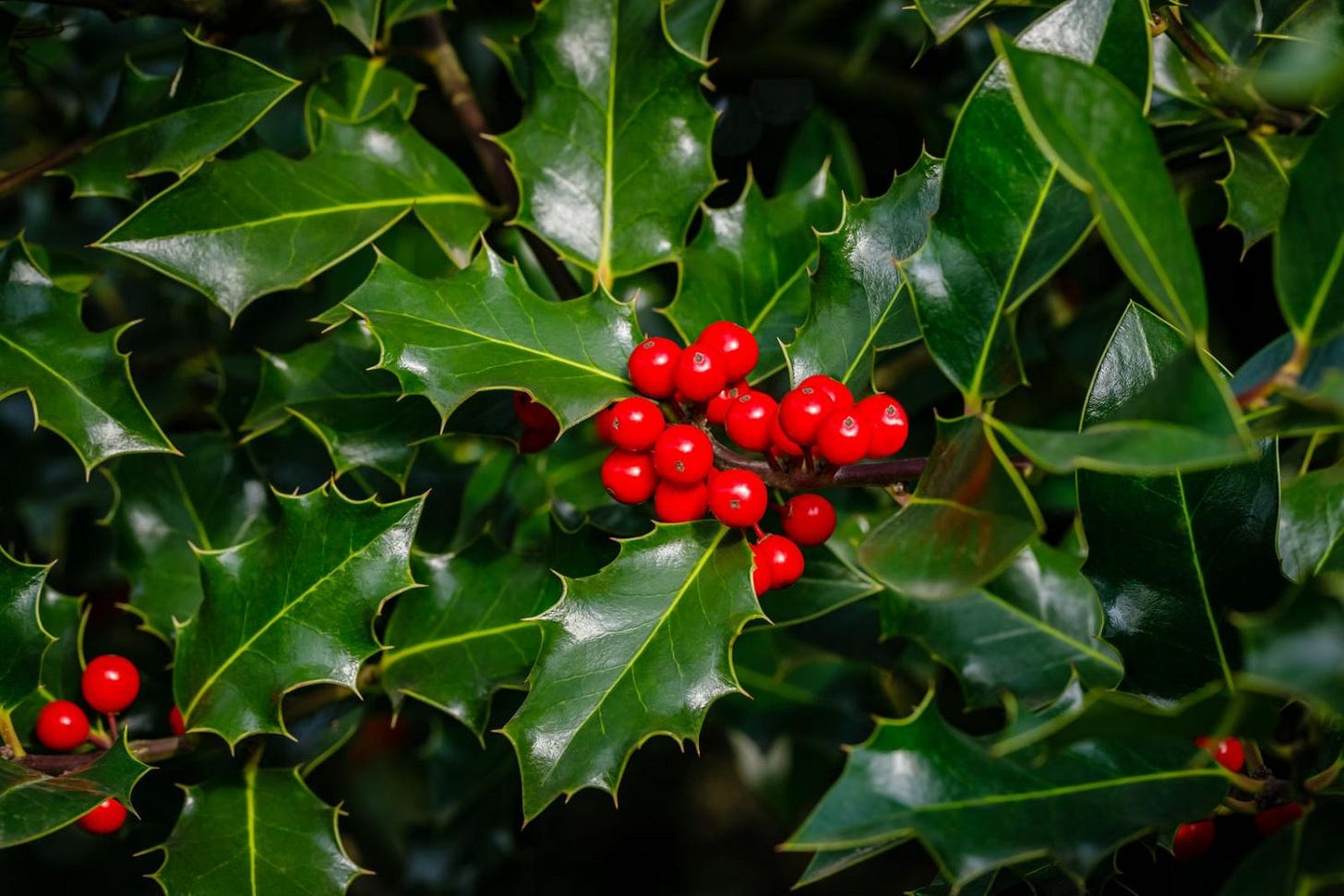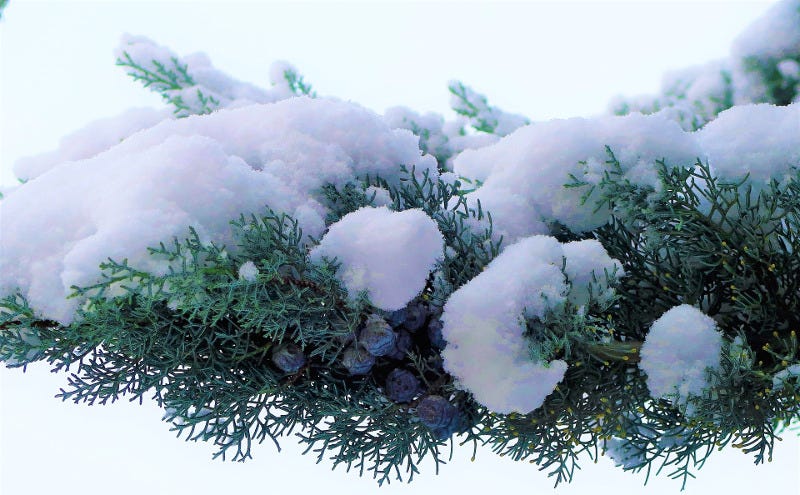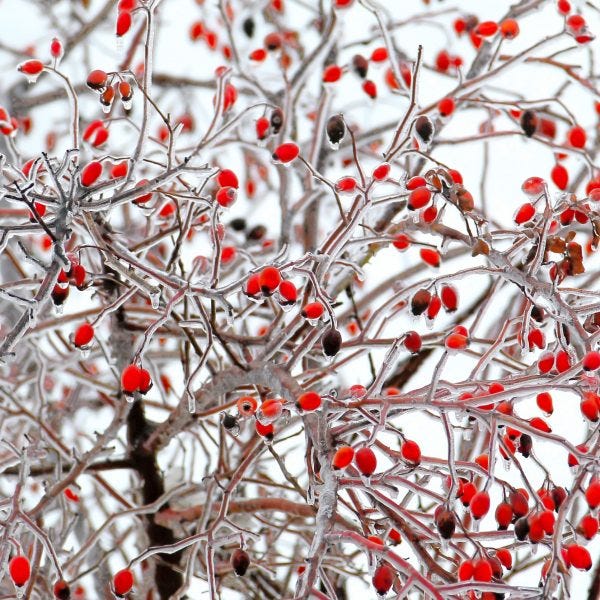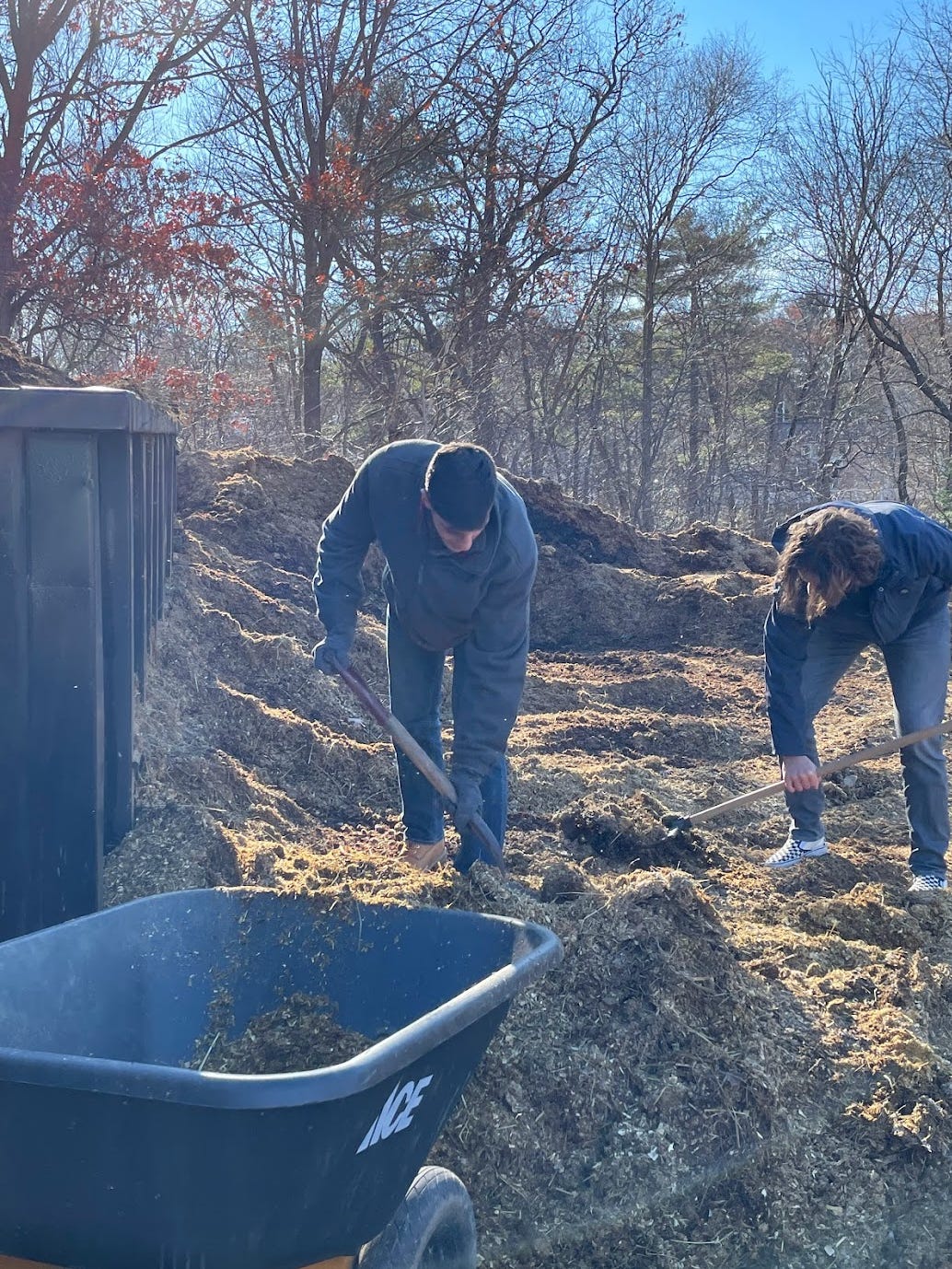Christmas in the Garden
At Advent and Christmas, we’re encouraged to contemplate the bleakness of the human condition alongside the promise of new life.
With the light at its lowest and the cold truly setting in, even the most avid gardeners are tempted to turn their attention indoors during the month of December. And this temptation is well and good: the natural cycle of the year is crucial for the health of both people and plants. The earth needs to lie fallow during these months, soaking up the nitrogen captured by falling snow and letting the leftover root systems of summer plants decompose into fresh nutrients. The hardworking human stewards of such spaces also deserve time to read, stay warm, and practice the increasingly difficult discipline of rest.
Yet a well-planted garden still has much to offer us in December, mostly in the form of garlands and decorations for festive tables. If you’re like me, some small part of your mind still reaches outdoors during these dark days, tentatively laying plans for next year’s plantings. If you’re looking to scratch that itch, here are a few recommendations for plants that will offer structure and a festive harvest during the bleak midwinter.
Holly

The most obvious choice for a festive plant to adorn our gardens is the Ilex or holly. Its cheerful red berries nestled between thorny evergreen leaves have been associated with Christmas at least since the Middle Ages: the mysterious Green Knight in the fourteenth-century poem Sir Gawain and the Green Knight walks into King Arthur’s court at Christmas with a sprig of holly clutched in his hand. Even earlier references than that associate the red color of the berries with the sacrificial blood of Christ and the evergreen leaves with eternal life.
In the garden, hollies make superb structural plants, providing columns or globes of glossy green color even when the summer splendor has faded. They don’t mind shade and are especially well placed in the back of a border, where their shape and hue provide visual interest when standing alone or form a rich background for flowering plants in front. Though the European or Christmas holly, Ilex aquifolium, has become ubiquitous in American gardens, it’s listed as invasive in some states. It can easily be replaced by the native American or Yule holly, Ilex opaca, whose slightly narrower and more muted leaves are lovely in their own right. No matter which you choose, the tree will provide an abundance of decorative branches for vases or the dinner table.
Juniper

Overused as it may have been in industrial plantings over the last fifty years, juniper’s tightly bunched blue-green foliage and cobalt-colored berries make it a great choice for wintry gardens, especially given the huge variety of sizes and shapes available. I keep two different kinds of juniper in my home garden: Juniperus pfitzeriana, whose low sprawling habit makes it excellent for the middle of a border, and Juniperus scopulorum “Skyrocket,” which climbs upward in a delicate tapering spire like the flame of a green candle.
No matter which type you go for, juniper won’t mind if you clip off a generous amount of green branches to make decorations. They keep for weeks even without water, and their delicately spicy scent adds good cheer to a room. The berries of some varieties can even be used sparingly to flavor drinks and recipes.
Roses

Roses might seem like a strange recommendation for winter gardening since no variety will keep its blooms or even its leaves during the cold of a New England autumn. However, once the petals fall away, the bright red hips of rose plants, especially of rambler roses, make perfect winter decorations. The running track here at CCA happens to be lined with wild roses and I harvest armfuls of hips each fall, a process which actually stimulates healthy growth on the plants next spring.
Roses are relatives of the apple, and the apple-like hips of larger varieties can be gathered and pressed into a delicate oil which is the foundational ingredient in many expensive skincare products. I’m told that rose hips also make an excellent summer wine. But for winter, planting plenty of roses in your garden will offer cheerful fruit that blushes deep red in the cold, adding color to the gray garden and providing decorations that will keep for weeks.
A Word of Warning
Many home gardeners would be tempted to add English Ivy, Hedera helix, to this list. After all, “The Holly and the Ivy” is a classic carol and innumerable yuletide images associate its evergreen threefold leaves with the season. Yet the plant is among the most aggressively invasive species in the US, choking native groundcovers and even destroying adult trees. If you absolutely must have ivy for the Christmas season, plant it in a pot indoors, where it will do well if the soil is kept moist and the leaves are kept out of the sun.
Gardens may bear their fruit and flowers in seasons, but the joy and intentionality they add to our lives are evergreen. At the Classical Roots Program, we continue to find new ways to reengage with the natural world even through the long dark of a New England December. At home, you can do so by finding any excuse to visit the garden during the preciously short winter days. Plantings like these are only some of the options—whatever draws you outside is likely to pay both physical and spiritual dividends.
At Advent and Christmas, we’re encouraged to contemplate the bleakness of the human condition alongside the promise of new life. Plants like the ones above make the perfect objects for such contemplation. “Lo, how a rose e’er blooming,” one classic carol says, “From tender stem hath sprung…Amid the cold of winter / When half-gone was the night.” For those of us who hold on to that hope, we would do well to contemplate the severe beauty and great promise of a rose in winter—a glint of color in a darkened world.






Beautifully said, son. It gladdens my heart to hear your words and to have this little
peak into your mind and heart on a cold winter Advent morning. Keep up the excellent work☺️
Well done...I've shared a link with four other gardens in my circle of friends who I know will enjoy reading your blog. Blessings on your Wednesday.